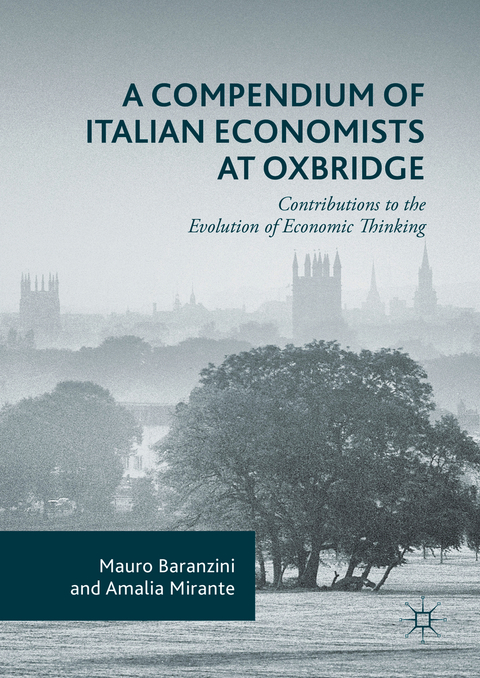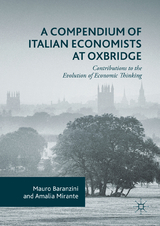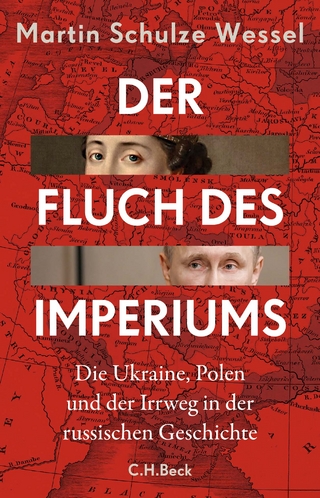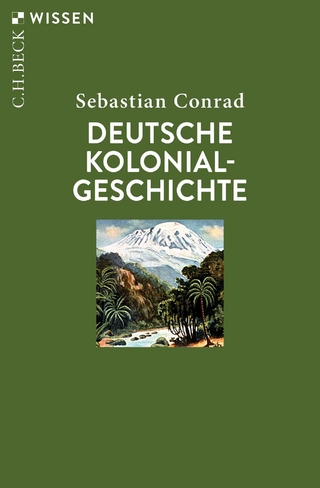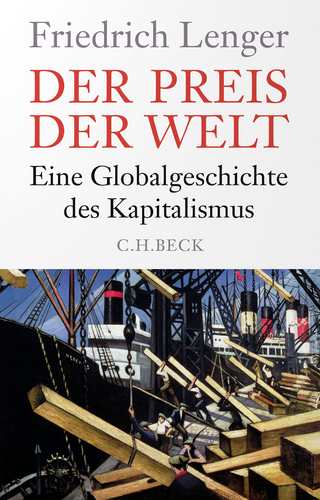A Compendium of Italian Economists at Oxbridge
Springer International Publishing (Verlag)
978-3-319-32218-6 (ISBN)
This study examines five decades of Italian economists who studied or researched at the Universities of Oxford and Cambridge between the years 1950 and 2000. Providing a detailed list of Italian economists associated with Hicks, Harrod, Bacharach, Flemming, Mirrlees, Sen and other distinguished dons, the authors examine eleven research lines, including the Sraffa and the neo-Ricardian school, the post-Keynesian school and the Stone's and Goodwin's schools. Baranzini and Mirante trace the influence of the schools in terms of 1) their fundamental role in the evolution of economic thought; 2) their promotion of four key controversies (on the measurement of technical progress, on capital theory, on income distribution and on the inter-generational transmission of wealth); 3) the counter-flow of Oxbridge scholars to academia in Italy, and 4) the invigoration of a third generation of Italian economists researching or teaching at Oxbridge today.
A must-read for all those interested in the way Italian and British research has shaped the study and teaching of economics.
Mauro Baranzini is Professor at the University of Lugano, Switzerland, which he helped to found in 1996. In 1971 he was awarded a Florey fellowship of The Queen’s College, Oxford, where from 1975 to 1984 he was Lecturer in Economics. He contributed widely to the Cambridge theory of income and wealth distribution.Amalia Mirante is Lecturer in Economics at the University of Lugano, Switzerland and at the University of Applied Sciences and Arts of Southern Switzerland. She has published several papers on economic theory, and a textbook on macro-economics.
'Preface.- 1. Introduction.- 1.1. The Historical and Factual
Background.- 1.2. The Framework of this Volume.- 1.3. The Circulation of Ideas
and the Cross-Fertilization Background.- 2. The Oxonian-Italian School of Economics,
1950 to about 1990.- 2.1. Who's Who.- 2.2. Luigi L. Pasinetti: The Frontrunner
in Oxford. Studentship and Research Fellowship at Nuffield College, 1959-60 and
1960-61.- 2.3. Italian Economists and John Hicks.- 2.3.1. Introduction.- 2.3.2.
Rainer Stefano Masera.- 2.3.3. Stefano Zamagni.- 2.3.4. Mario Amendola.- 2.3.5.
Piero Ferri.- 2.3.6. Annalisa Cristini.- 2.3.7. Carlo Dell'Aringa.- 2.3.8. Augusto
Schianchi.- 2.3.9. Roberto Cippà and Vinicio Guidi.- 2.3.10. Carlo Casarosa.- 2.3.11.
Andrea Maneschi.- 2.3.12. On Carlo Casarosa Again.- 2.3.13. Giacomo Vaciago.- 2.3.14.
Alessandro Vercelli.- 2.4. Building on the 'Exchange' and 'Production' Paradigm:
Alberto Quadrio Curzio and Roberto Scazzieri.- 2.5. Italian Economists on Roy
Harrod.- 2.6. Italian Graduate Students at Nuffield College (1970-1995).- 2.6.1. Imperfect Competition and General
Equilibrium Models.- 2.6.2. Carlo Luigi Beretta.- 2.6.3. Gianpaolo Rossini.- 2.6.4.
Flavio Delbono.- 2.6.5. Vincenzo Denicolò.- 2.6.6. Gianni De Fraja.- 2.6.7. Luigi
A. Franzoni.- 2.6.8. Carlo Scarpa.- 2.6.9. Luca Lambertini.- 2.6.10. Gian
Cesare Romagnoli.- 2.6.11. On Some Analytical Results.- 2.6.12. Elettra
Agliardi.- 2.6.13. Models of Saving and Accumulation: The Flemming-Mirrlees
(-Hicks-Kaldor-Pasinetti) Approach.- 2.7. Italian Economists at Oxford Building
on Production Theory.- 2.7.1. Introduction.- 2.7.2. Roberto Scazzieri.- 2.7.3. Mario
Morroni.- 2.7.4. Antonio Andreoni.- 2.8. Italian Scholars at the Bounded
Rationality in Economic Behaviour unit of Michael Bacharach.- 2.8.1. Daniele
Giovanni Zizzo.- 2.8.2. Michele Bernasconi.- 2.9. Other Distinguished Italian
Scholars who did research in Oxford.- 2.9.1. Pierluigi Ciocca.- 2.9.2. Stefano
Mieli.- 2.9.3. Francesca Sanna Randaccio.- 2.9.4. Mario Biagioli.- 2.9.5. Paolo
Piacentini-Karnizawa.- 2.9.6. Michele Morciano.- 2.9.7. Bruno Salituro .- 2.9.8. Lia Fubini.- 3. The
Cantabrigiensis-Italian School of Economics (1950-~1990).- 3.1. Who's Who.- 3.2. Piero Sraffa, the
Neo-Ricardian School and the Capital Controversy.- 3.2.1. Introduction.- 3.2.2.
Piero Sraffa.- 3.2.3. Pierangelo
Garegnani.- 3.2.4. Alessandro Roncaglia.- 3.2.5. Domenico Mario Nuti.- 3.2.6. Salvatore
Biasco.- 3.2.7. Sebastiano Brusco.- 3.2.8.
Giorgio Gilibert.- 3.2.9. Giancarlo De Vivo.-
3.2.10. Antonietta Campus.- 3.2.11. Fabio Petri.- 3.2.12. Mario Tonveronachi.- 3.2.13.
Roberto Ciccone.- 3.2.14. Fabio Ranchetti.-
3.3. Luigi L. Pasinetti: Back to King's College from Oxford, October 1961.- 3.3.1.
Pasinetti on Profit Determination, Income Distribution and Capital Accumulation.-
3.3.1.1. The Introduction of a Differentiated Rate of Return on Savings for the
Classes.- 3.3.1.2. The Introduction of the Monetary Sector and of Portfolio
Choice.- 3.3.1.3. The Stability Analysis and the Long-Term Properties of the
Model.- 3.3.1.4. The Introduction of a Public Sector.- 3.3.1.5. The
Introduction of the Micro-Foundations into the Model.- 3.3.1.6. The
Distribution of Wealth and the Income Shares of the Economic Classes.- 3.3.1.7.
Other General Aspects of the Kaldor/Pasinetti Model.- 3.3.2. Pasinetti on
Capital Theory.- 3.3.3. Pasinetti on Structural Dynamics and Vertical
Integration.- 3.3.4. Pasinetti on the Pure Labour Theory of Value.- 3.4. Other
Post-Keynesian Economists.- 3.4.1. Introduction.- 3.4.2. Nino (Beniamino)
Andreatta.- 3.4.3. Paolo Leon.- 3.4.4. Fernando Vianello.- 3.4.5. Ferdinando
Targetti.- 3.4.6. Joseph Halevi.- 3.4.7. Massimo Ricottilli.- 3.4.8. Anna
Carabelli.- 3.4.9. Maria Cristina Marcuzzo.- 3.4.10. Claudio Sardoni .- 3.4.11. Ferrucccio Marzano.- 3.5.
Alberto Quadrio Curzio's Contribution to the Cambridge-Italian School of
Economics.- 3.5.1. Rent
"It may well prove interesting not only for Italian economists who were, directly or indirectly, acquainted with one or another of the figures dealt with, but for all scholars seeking a better understanding of the contribution of Italian economists to some of the main theoretical strands of the second half of the 20th century. More in general, it has much to offer to readers interested in exploring the processes through which (economic) ideas can be generated." (Eleonora Sanfilippo, History of Economic Ideas, Issue 3, 2017)
| Erscheinungsdatum | 18.08.2016 |
|---|---|
| Zusatzinfo | XII, 288 p. |
| Verlagsort | Cham |
| Sprache | englisch |
| Maße | 148 x 210 mm |
| Themenwelt | Geschichte ► Teilgebiete der Geschichte ► Wirtschaftsgeschichte |
| Sozialwissenschaften ► Pädagogik ► Allgemeines / Lexika | |
| Wirtschaft ► Volkswirtschaftslehre ► Makroökonomie | |
| Schlagworte | Absolute Rent • Bounded Rationality • Cambridge equation • Capital Theory • Differential Rent • Economic History • Economics and finance • General equlibrium models • income distribution • Input-output analysis • Inter-generational transmission of wealth • Lincei Academy Rome • Methodology/History of Economic Thought • Multi-sectoral models • Overlapping Generations • Post-Keynesian theory • Production theory • R & D/Technology Policy • R & D/Technology Policy • Ricardian economics • Stone's input-output economics • Structural Change • Technical Progress • Wealth accumulation • Wealth distribution |
| ISBN-10 | 3-319-32218-4 / 3319322184 |
| ISBN-13 | 978-3-319-32218-6 / 9783319322186 |
| Zustand | Neuware |
| Haben Sie eine Frage zum Produkt? |
aus dem Bereich
